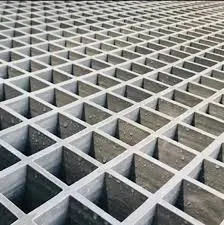
-
 Afrikaans
Afrikaans -
 Albanian
Albanian -
 Amharic
Amharic -
 Arabic
Arabic -
 Armenian
Armenian -
 Azerbaijani
Azerbaijani -
 Basque
Basque -
 Belarusian
Belarusian -
 Bengali
Bengali -
 Bosnian
Bosnian -
 Bulgarian
Bulgarian -
 Catalan
Catalan -
 Cebuano
Cebuano -
 China
China -
 China (Taiwan)
China (Taiwan) -
 Corsican
Corsican -
 Croatian
Croatian -
 Czech
Czech -
 Danish
Danish -
 Dutch
Dutch -
 English
English -
 Esperanto
Esperanto -
 Estonian
Estonian -
 Finnish
Finnish -
 French
French -
 Frisian
Frisian -
 Galician
Galician -
 Georgian
Georgian -
 German
German -
 Greek
Greek -
 Gujarati
Gujarati -
 Haitian Creole
Haitian Creole -
 hausa
hausa -
 hawaiian
hawaiian -
 Hebrew
Hebrew -
 Hindi
Hindi -
 Miao
Miao -
 Hungarian
Hungarian -
 Icelandic
Icelandic -
 igbo
igbo -
 Indonesian
Indonesian -
 irish
irish -
 Italian
Italian -
 Japanese
Japanese -
 Javanese
Javanese -
 Kannada
Kannada -
 kazakh
kazakh -
 Khmer
Khmer -
 Rwandese
Rwandese -
 Korean
Korean -
 Kurdish
Kurdish -
 Kyrgyz
Kyrgyz -
 Lao
Lao -
 Latin
Latin -
 Latvian
Latvian -
 Lithuanian
Lithuanian -
 Luxembourgish
Luxembourgish -
 Macedonian
Macedonian -
 Malgashi
Malgashi -
 Malay
Malay -
 Malayalam
Malayalam -
 Maltese
Maltese -
 Maori
Maori -
 Marathi
Marathi -
 Mongolian
Mongolian -
 Myanmar
Myanmar -
 Nepali
Nepali -
 Norwegian
Norwegian -
 Norwegian
Norwegian -
 Occitan
Occitan -
 Pashto
Pashto -
 Persian
Persian -
 Polish
Polish -
 Portuguese
Portuguese -
 Punjabi
Punjabi -
 Romanian
Romanian -
 Russian
Russian -
 Samoan
Samoan -
 Scottish Gaelic
Scottish Gaelic -
 Serbian
Serbian -
 Sesotho
Sesotho -
 Shona
Shona -
 Sindhi
Sindhi -
 Sinhala
Sinhala -
 Slovak
Slovak -
 Slovenian
Slovenian -
 Somali
Somali -
 Spanish
Spanish -
 Sundanese
Sundanese -
 Swahili
Swahili -
 Swedish
Swedish -
 Tagalog
Tagalog -
 Tajik
Tajik -
 Tamil
Tamil -
 Tatar
Tatar -
 Telugu
Telugu -
 Thai
Thai -
 Turkish
Turkish -
 Turkmen
Turkmen -
 Ukrainian
Ukrainian -
 Urdu
Urdu -
 Uighur
Uighur -
 Uzbek
Uzbek -
 Vietnamese
Vietnamese -
 Welsh
Welsh -
 Bantu
Bantu -
 Yiddish
Yiddish -
 Yoruba
Yoruba -
 Zulu
Zulu
fiberglass holding tanks
Fiberglass Holding Tanks A Comprehensive Overview
Fiberglass holding tanks have emerged as a popular solution for various storage needs across multiple industries, thanks to their durability, versatility, and cost-effectiveness. These tanks are primarily used for the storage of liquids, such as wastewater, chemicals, and potable water. Their design and construction materials make them suitable for a range of applications, from industrial to residential uses.
One of the primary advantages of fiberglass holding tanks is their resistance to corrosion. Unlike metal tanks, which can deteriorate over time due to rusting or chemical reactions, fiberglass tanks are made from a composite material that does not corrode. This characteristic is particularly valuable in environments where tanks may be exposed to harsh chemicals or extreme weather conditions. The longevity of fiberglass tanks not only helps in minimizing maintenance costs but also ensures the safety and integrity of the stored liquids.
In addition to being corrosion-resistant, fiberglass holding tanks are lightweight compared to their metal counterparts. This attribute allows for easier transportation and installation, reducing labor costs and logistical challenges. The lightweight nature also means that less structural support may be required, making them a preferred choice for many sites that may not have the capacity to support heavier tanks.
fiberglass holding tanks

Another significant benefit of fiberglass holding tanks is their flexibility in design. These tanks can be molded into various shapes and sizes, catering to the specific needs of users. Whether it’s for residential rainwater collection or large-scale industrial wastewater storage, fiberglass tanks can be custom-made to meet any requirement. This adaptability also extends to installation options, as they can be above ground or buried underground, depending on the site conditions and usage requirements.
Moreover, fiberglass tanks offer excellent insulation properties. They can effectively maintain the temperature of the liquids stored within, which is crucial in applications where temperature fluctuations can impact the integrity of the contents. This quality is particularly important for the treatment of wastewater, where maintaining a stable environment can enhance the efficiency of biological processes.
In terms of environmental impact, fiberglass holding tanks are also a more sustainable option. They are often manufactured using materials that are less harmful to the environment compared to traditional tank materials. Additionally, their longevity and resistance to degradation mean that fewer replacements are necessary over time, thereby reducing waste.
In conclusion, fiberglass holding tanks provide a reliable, cost-effective, and environmentally-friendly solution for liquid storage needs. Their resistance to corrosion, lightweight nature, flexibility in design, insulation properties, and sustainability make them an attractive option across various industries. As more businesses and homeowners recognize these benefits, the demand for fiberglass holding tanks is likely to continue to grow, paving the way for innovation and improved technologies in storage solutions.









